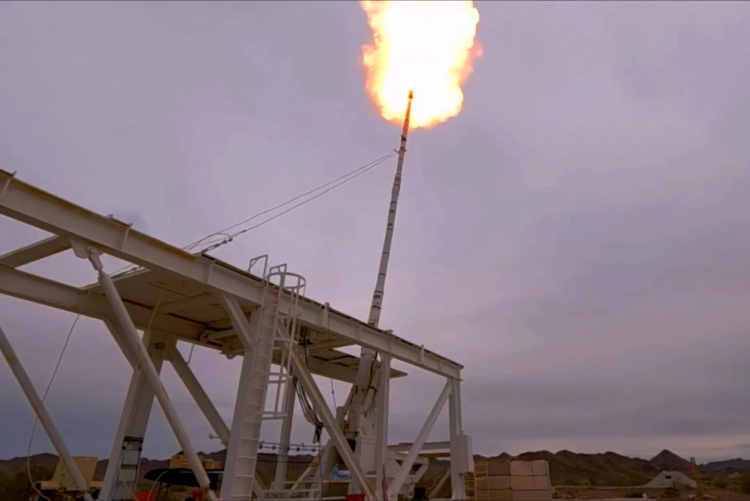
As space rockets damage the environment and sometimes simply explode at launch or in flight, humanity is looking for more effective alternatives. In addition to the “kinetic gun” SpinLaunch, which spins the object to high speed before launch into space, there is another option – a huge gas gun from Green Launch.
The company’s CEO, Dr. John W. Hunter, led the Super High Altitude Research Project (SHARP) at Livermore National Laboratory 30 years ago to develop the world’s largest and most powerful “hydrogen pulse launcher.”
In essence, it is a long tube filled with hydrogen with the addition of helium and oxygen. Gases are an alternative to powder or other pyrotechnic charge, accelerating the payload to enormous speeds. In 1992, the 122-mm installation managed to reach a speed of 9 strokes. The company claims that the solution scales much better than the proposed SpinLaunch option.
In order to bring cargo into orbit, the projectiles that are launched must have an additional stage with a rocket engine that provides acceleration and the ability to maneuver in space to enter the desired orbit.
Green Launch believes that the cost of launching will be minimal, about an order of magnitude lower than the cost of launching cargo in the traditional way. In addition, the absence of first-degree missiles will protect nature from harmful effects because the combustion of hydrogen in the gun itself leaves no emissions other than water. And the operators of the satellite groups will be able to launch them one by one, which will avoid the risk of losing a couple of hundred objects together in the event of a failed rocket launch.
You can run every 60-90 minutes. In other words, it is possible to launch objects into low Earth orbit with an altitude of 300-1000 km in less than two hours, and the projectile itself will reach its destination in just 10 minutes after firing.
The company has already built a test facility 16.5 m high and tested it at the site in Arizona at the end of last year, reaching a speed of more than 3 swings and sending the projectile into the stratosphere. This year, the company intends to provide the facility with speed sufficient to overcome the so-called ‘Pocket Lines’ – a height of 100 km, which stretches the border with space.
Partners and clients include the University of California, San Diego and Harvard, sponsored by the US National Science Foundation. In particular, the project is able to provide valuable data to climatologists, taking samples of the atmosphere from a height of 30-100 km – here is very high for ball probes and very low for satellites, and conventional missiles can contaminate samples with their exhaust.

